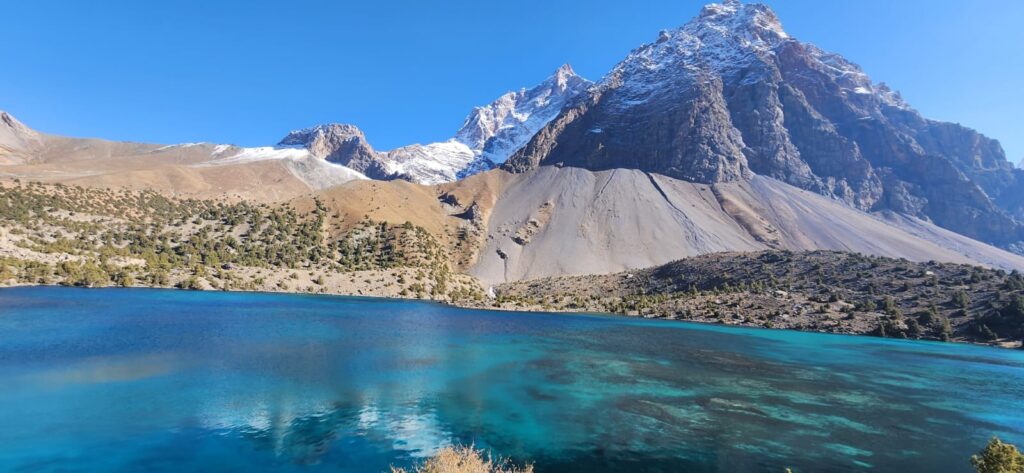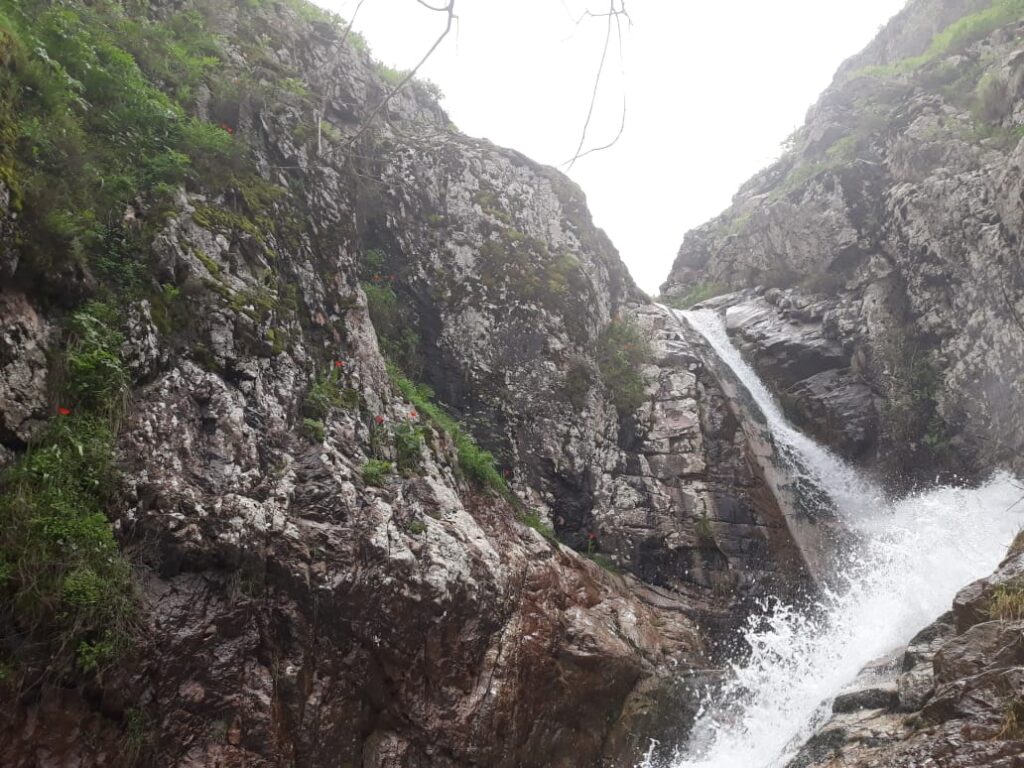Across Tajikistan’s valleys and foothills, trees grow not only in forests but also in fields, canalsides, and village gardens. This blending of trees with crops and pastures is part of a long agroforestry tradition that shapes both landscapes and livelihoods. In recent decades, changing climate patterns, land-use reforms, and development programs have introduced new methods, sometimes complementing traditional practices and sometimes challenging them. The result is a mosaic of agroforestry systems that lie between inherited ecological knowledge and modern agronomic experimentation.
Tajikistan’s varied topography creates distinct ecological zones that lend themselves to different forms of agroforestry. In lowland Khatlon, irrigated agriculture dominates, with tree belts planted along canals and field margins to reduce wind erosion and stabilize soils. In central valleys, mixed orchards combine apricot, walnut, pistachio, and apple trees with annual crops such as wheat, beans, or vegetables. In upland areas of Sughd and Gorno-Badakhshan, scattered fruit trees grow amid pastures, providing shade for livestock and supplemental harvests for households. These spatial arrangements reflect centuries of adaptation to local soils, moisture regimes, and microclimates.
Agroforestry in Tajikistan is less a singular practice than a set of geographic adaptations. Trees are placed where they make ecological and hydrological sense: along windswept plains, on terraces where roots stabilize slopes, beside canals where they intercept seepage and reduce evaporation.
Traditional agroforestry developed under conditions of scarce arable land and variable climate. Farmers learned to use tree cover to mitigate risks by providing shade during hot summers, wind protection for delicate crops, and insurance against crop failure through fruit and nut yields. Oral histories in several valleys describe how ancestors planted rows of poplars and willows to mark irrigation boundaries and prevent canal bank collapse. These linear tree systems, still visible today, also served as microclimatic buffers, reducing evapotranspiration in adjacent fields.
The physical geography of Tajikistan plays a decisive role in shaping agroforestry patterns. Soils vary from deep loess in lowlands to thin, stony layers on terraces and mountain slopes. Water availability depends on both snowmelt-fed irrigation networks and localized springs. Trees are often positioned strategically: mulberries thrive on moist soils near irrigation channels, pistachios prefer dry southern slopes, walnuts anchor mid-elevation terraces with deeper soils. These patterns are visible in satellite imagery, where linear groves follow canal networks and clusters of orchards align with topographic contours.
Modern interventions have introduced new species and planting techniques. Development projects since the 2000s have promoted fast-growing species such as poplar and sea buckthorn for fuelwood, erosion control, and income generation. In some areas, demonstration plots have showcased alley cropping- alternating rows of trees and annual crops in order to improve soil fertility and reduce wind erosion. Remote sensing and GIS tools are increasingly used to map land use and identify degraded lands suitable for tree planting. Yet the success of these interventions depends on matching species and methods to local geographic contexts. Planting water-demanding species in marginal irrigated zones, for example, can exacerbate shortages downstream.
A farmer in Vakhsh explained, “The new trees grow quickly, but they drink too much. The old mulberries know this land better.” His remark captures the tension between introduced techniques and long-standing local knowledge. Modern agroforestry can bring benefits through carbon sequestration, erosion control and diversified income but when it ignores geographic and hydrological realities, it risks unintended consequences.
The future of agroforestry in Tajikistan hinges on reconciling two knowledge systems: traditional ecological practices shaped by centuries of geographic adaptation, and modern agronomic methods that offer new possibilities but must be grounded in place.
Slope stabilization is one domain where agroforestry’s geographic role is particularly clear. In many upland areas, deforestation and overgrazing have increased erosion, leading to landslides and sedimentation of irrigation canals. Planting deep-rooted species such as walnuts or almonds on terraces helps bind soil and reduce surface runoff during spring snowmelt. Studies in central Tajikistan have shown that vegetative cover on slopes can reduce sediment yield by more than 50% compared to bare slopes (Ehlers & Kreutzmann, 2000). This makes agroforestry a valuable tool not just for production but for hazard mitigation.
Agroforestry also affects microclimates. Tree canopies moderate temperature extremes, increase humidity, and reduce wind speeds at the field scale. In hot lowland regions, this can significantly reduce evapotranspiration losses, conserving scarce irrigation water. In mountain valleys, tree belts protect fields from cold downslope winds at night, extending the growing season for frost-sensitive crops. These localized climatic effects are crucial in a country where water resources are unevenly distributed and climate variability is increasing.
In recent years, climate change has added urgency to agroforestry discussions. Rising temperatures and shifting precipitation patterns threaten to reduce water availability and increase erosion in many regions. Trees can buffer some of these impacts by improving soil structure, enhancing infiltration, and stabilizing slopes. However, they are also vulnerable: drought stress can reduce survival rates of new plantings, and extreme weather events can damage orchards. Choosing resilient species and site-specific planting designs is therefore critical.
Technological tools are playing a growing role in bridging tradition and modernity. Satellite imagery allows monitoring of tree cover changes, while participatory mapping helps integrate local knowledge into planning. Some projects use remote sensing to identify areas where traditional orchards have declined and target them for restoration. Others experiment with mixed-species planting that combines fast-growing trees for short-term benefits with traditional species for long-term stability.
Looking across the landscape of central Tajikistan in late summer, the spatial signature of agroforestry is clear. Canals lined with poplars cut through wheat fields. Orchards cluster on terraces above rivers. Individual trees dot pasture slopes, marking springs and paths. These patterns are not random- they are the result of geographic reasoning encoded in everyday practice. Modern techniques may alter some of these patterns, but the logic of matching trees to terrain remains.
References
- Ehlers, E., & Kreutzmann, H. (2000). High mountain ecology and land use in Central Asia and the Himalaya. Springer.
- FAO. (2017). Agroforestry for landscape restoration: Exploring the potential of agroforestry to enhance the sustainability and resilience of degraded landscapes. Rome: Food and Agriculture Organization.
- Kayumov, A. (2010). Climate change impact on water resources in Tajikistan. Dushanbe: Tajik Hydromet.
- Shukurov, E., Sedik, D., & Akramov, K. (2013). Agricultural land use in Tajikistan: Patterns and trends. Eurasian Geography and Economics, 54(6), 634–657.
- Van Noordwijk, M., Bayala, J., Hairiah, K., Lusiana, B., Muthuri, C., & Khasanah, N. (2014). Agroforestry solutions for buffering climate variability and adapting to change. Current Opinion in Environmental Sustainability, 6, 69–75.








